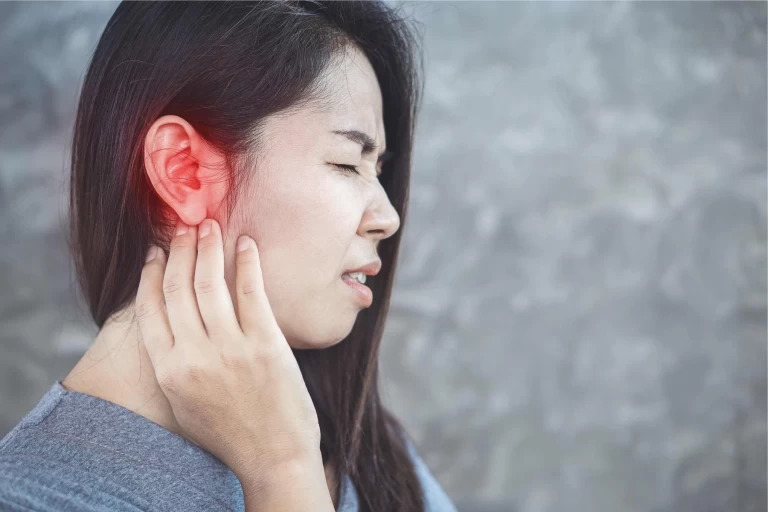
Upper Cervical Chiropractic and Meniere's Disease
What is Meniere’s Disease?
Meniere’s disease is a disorder of the inner ear that can occur at any age but typically begins between young and middle-aged adults. Meniere’s disease affects only one ear and is considered a chronic condition that may lead to vertigo and hearing loss.
What are the Symptoms of Meniere’s Disease?
Meniere’s disease signs and symptoms related to the inner ear. After having these symptoms occur, it is possible for the symptoms to improve or disappear entirely for a while and the frequency could lessen.
- Hearing loss - Hearing loss associated with Meniere’s disease can come and go; however, most people with Meniere’s disease suffer from some permanent hearing loss eventually.
- Reoccurring episodes of vertigo - Vertigo is a spinning sensation where the person feels as if they are off-balance or the environment around them is moving. Vertigo occurs without warning, lasting anywhere from 20 minutes up to several hours with severe vertigo causing nausea.
- Tinnitus (ringing in the ear) - Tinnitus is a “phantom noise” that sounds like a buzzing, roaring, whistling, hissing, or ringing sound in the ear. The noise is not there, but it can become loud enough to make it difficult to hear actual noises around you.
- A feeling of fullness in the ear - Aural fullness is the sensation of ear fullness. It cannot be relieved in a normal manner. Those with Meniere’s disease often feel pressure in the ear affected by the disorder.
How is Meniere’s Disease Treated?
There are many options available for treating Meniere’s disease. Below are some of the common treatments for Meniere’s disease:
- Vertigo Medication - This includes motion sickness medication and anti-nausea medication.
- Long-term Medication - A doctor may prescribe a medication to reduce fluid retention.
- Non-Invasive Therapies and Procedures - These options for treating Meniere’s disease include rehabilitation to help with balance problems, hearing aids, and positive pressure therapy (where pressure is applied to the middle ear to lessen fluid buildup).
- Middle Ear Injections- -Steroid injections are used in hopes to control vertigo attacks. Gentamicin is an antibiotic that is toxic to your inner ear and used to reduce the balancing function of your affected ear - giving all responsibility for balance to the other ear; however, this can result in further hearing loss.
- Surgery - Depending on the severity of the vertigo attacks you experience with Meniere’s disease, surgery is the last resort for those who have seen no improvement from the previous treatments.
Labyrinthectomy surgery removes the balance portion of the inner ear. In return, this procedure removes both balance and hearing function from the ear affected by Meniere’s disease. Because of this, labyrinthectomy is only performed if the patient already has near or complete hearing loss in the affected ear.
The endolymphatic sac procedure decompresses the endolymphatic sac to alleviate excess fluid levels. The endolymphatic sac is a membranous structure located in the inner ear that regulates inner ear fluids. This procedure may involve the placement of a shunt in some cases. The shunt is a tube used to drain excess fluid from the inner ear.
The vestibular nerve section cuts the nerve that connects balance and movement sensors in the inner ear to the brain. The vestibular nerve section procedure tries to preserve the hearing in the affected ear while relieving one from vertigo.
Keep in mind, there is always a risk involved when using medication or surgery as a treatment option as these options try to relieve one from Meniere’s disease symptoms by fooling the body on how to react or function to a problem.
Does Meniere’s Disease go Away?
Meniere’s disease does not simply “go away”. Meniere’s disease is progressive and worsens over time.
There are treatment options available that help alleviates Meniere’s disease symptoms, but to have the best possibility in overcoming Meniere’s disease there is an all-natural alternative available for treating Meniere’s disease that gives the patient’s body a chance at fighting off what could be the cause of their disorder.
Upper cervical treatments are safe for all ages and use gentle, precise adjustments to ensure the brain stem is healthy enough to encourage our body to work and respond properly to changes that can threaten our health – including ear health.
How Does an Upper Cervical Treatment for Meniere’s Disease Work?
Compared to other treatment options for Meniere’s disease, upper cervical adjustments to Help Meniere’s disease allow the body to target the underlying cause of your Meniere’s disease rather than focusing on the symptoms (which is what surgery and medication do).
Surgery and medication are made to help relieve the patient of their symptoms associated with whatever condition they are experiencing. They are not used to get rid of the cause and instead focus on altering how the natural body works and responds to that condition so it will ignore the symptoms instead.
The best way to target any condition is to focus on fixing the main problem. With upper cervical adjustments, patients with Meniere’s disease have the ability to heal and repair the underlying issue causing them to suffer from the symptoms associated with Meniere’s disease.
The way upper cervical adjustments work is by adjusting misalignments located within the upper cervical spine, located beneath the base of the skull. This is a very vital area as it protects your brain stem and any misalignment in this area can cause the brain stem to lack in performance.
The brain stem is the bridge between your brain to body communication. If a misalignment presses up against the brain stem, these signals become misinterpreted, exaggerated, or sometimes not sent out at all!
With signals being misinterpreted or inaccurate due to an upper cervical misalignment compressed against the brain stem, body functions begin to change including improper fluid drainage, abnormal immune response, and do not allow the body to accurately fight against infection.
Patients who have gone through surgery and prescribed medications still notice an improvement in their condition in as little as one upper cervical adjustment. This is because after one adjustment, once the pressure is taken off the brain stem the communication begins to clear up immediately and the body begins the repair and healing process as soon as it is able.
The amount of adjustments depends on the severity of the misalignment and how long the misalignment has been present.
The overall goal of the upper cervical chiropractor is to make gentle, very precise adjustments to the upper cervical spine and make fewer adjustments over time until the area is strong enough to hold the alignment on its own.







Leave a comment